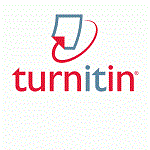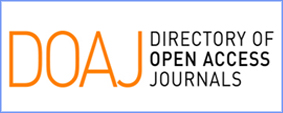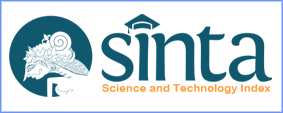The Effectivenes Of The Missouri Mathematics Project Model on Creative Thinking Ability and Self-Efficacy
Abstract
Kemampuan untuk berpikir kreatif matematis dapat dikatakan sebagai kapabilitas kognitif untuk mengajukan dan mempertimbangkan informasi sehingga dapat memberikan perbedaan dari gagasan serta menjadikan pengetahuan yang baru dalam menunjang keberhasilan dalam pembelajaran. Penelitian ini disusun dengan maksud agar dapat memahami bagaimana model pembelajaran Missouri Mathematics Project (MMP) dapat bekerja efektif pada kapabilitas berpikir kreatif matematis dan efikasi yang ada pada diri siswa SMA. Penulisan ini diaplikasikan dengan memakai metode eksperimen semu. Subjek penelitian terdiri dari 80 siswa, dimana setiap kelas eksperimen maupun kelas kontrol memiliki jumlah sebanyak 40 siswa yang dipilih secara purposive. Perhitungan dalam bahasan jurnal ini berasal dari instrumen kemampuan berpikir kreatif matematis dan efikasi diri. Penelitian ini memakai analisis data Mann Whitney U Test, Cohen's d Effect Size Test dan Spearman Correlation guna mengetahui perbedaannya. Berdasarkan data yang ditemukan, menunjukan hasil yang menyatakan bahwa pengaruh berada pada kategori besar dan memiliki hubungan yang baik. Sedangkan siswa di kelas MMP didominasi oleh kategori efikasi diri tinggi. Dengan demikian, siswa yang melakukan pembelajaran matematika dengan model MMP mempunyai kemampuan untuk dapat berpikir kreatif matematis yang lebih unggul jika membandingkannya dengan siswa lain yang memanfaatkan cara konvensional.
Creative thinking ability are cognitive abilities in proposing and considering information so that they can provide different ideas and become new knowledge in supporting success in learning. The purpose of this study was to determine the effectiveness of the Missouri Mathematics Project (MMP) learning model on the mathematical creative thinking ability and self-efficacy of high schooler. This study used a quasi-experimental method. The subjects of this study amounted to 80 students, where each experimental class and control class amounted to 40 students who were selected purposively. The calculations in this study came from the instruments of mathematical creative thinking ability and self-efficacy. Data analysis in this study used the Mann-Whitney U Test, Cohen's d Effect Size Test, and Spearman Correlation to determine the difference. Based on the data obtained, the study results indicate that the effect is in a large category and has a good relationship. Meanwhile, the high self-efficacy category dominated students in the MMP class. Therefore, students with learn mathematics using the MMP learning model have better mathematical creative thinking skills than students with conventional mathematics learning.
Keywords: Creative Thinking Ability; Missouri Mathematics Project, Self-Efficacy
Keywords
Full Text:
PDFReferences
Abdurrozak, R., Jayadinata, A. K., & ‘atun, I. (2016). Pengaruh Model Problem Based Learning Terhadap Kemampuan Berpikir Kreatif Siswa. Jurnal Pena Ilmiah, 1(1), 871–880.
Apriliya, & Basir, M. A. (2019). Analisis Kemampuan Berpikir Kreatif Matematis Siswa Pada Materi Matriks Ditinjau Dari Self-Efficacy. Jurnal Pemikiran Dan Penelitian Pendidikan Matematika (JP3M), 2(2), 97–111.
Asfar, A. M. I. T., Asfar, A. M. I. A., & Sartina. (2018). Modifikasi Model Pembelajaran Missouri Mathematics Project (MMP) Dengan Model Pembelajaran Explicit Intruction (EI) Dalam Meningkatkan Pemahaman Konsep Matematika Siswa. Jurnal AKSARA PUBLIC, 2(4), 23–38.
Dilla, S. C., Hidayat, W., & Rohaeti, E. E. (2018). Faktor Gender dan Resiliensi dalam Pencapaian Kemampuan Berpikir Kreatif Matematis Siswa SMA. Journal of Medives : Journal of Mathematics Education IKIP Veteran Semarang, 2(1), 129–136.
Dogan, Y. B., Akar, H., & UstUner, M. (2019). Examining the measurement invariance of the teachers’ sense of self-efficacy scale in terms of gender. International Journal of Evaluation and Research in Education, 8(2), 213–220.
Fatah, A., Suryadi, D., Sabandar, J., & Turmudi. (2016). Open-ended approach: An effort in cultivating students’ mathematical creative thinking ability and self-esteem in mathematics. Journal on Mathematics Education, 7(1), 11–20.
Fauziah, A., & Sukasno. (2015). Pengaruh Model Missouri Mathematics. Infinity Jurnal Ilmiah Program Studi Matematika STKIP Siliwangi Bandung, 4(1), 10–21.
Ginting, E. B., Purwanto, S. E., & Faradillah, A. (2019). Pengaruh Model Pembelajaran Creative Problem Solving (cps) Terhadap Kemampuan Berpikir Kreatif Matematis Siswa. Gammath: Jurnal Ilmiah Program Studi Pendidikan Matematika, 4(1), 9–16.
Handayani, I., Januar, R. L., & Purwanto, S. E. (2018). The effect of Missouri mathematics project learning model on students’ mathematical problem solving ability. Journal of Physics: Conference Series, 948(1), 1–5.
Hardani, Andriani, H., Ustiawaty, J., Utami, E. F., Istiqomah, R. R., Fardani, R. A., Sukmana, D. J., & Auliya, N. H. (2020). Buku Metode Penelitian Kualitatif dan Kuantitatif (H. Abadi (ed.); Issue Maret). CV. Pustaka Ilmu Group Yogyakarta.
Hayati, E. D., Jalmo, T., & Yolida, B. (2019). Pengaruh Project Based Learning terhadap Peningkatan Kemampuan Berpikir Kreatif dan Self-efficacy. Jurnal Bioterdidik: Wahana Ekspresi Ilmiah, 7(3), 10–21.
Hendriana, H., Roehati, E. E., & Sumarno, U. (2017). BUKU HARD SKILLS & SOFT SKILLS.pdf. In N. F. Atif (Ed.), Hard Skills dan Soft Skills Matematik Siswa (pp. 265–282). PT Refika Aditama.
Jendra, A. F., & Sugiyo. (2020). Pengaruh Efikasi Diri Terhadap Kecemasan Presentasi Siswa Kelas XI di SMA Negeri 1 Wuryantoro. KONSELING EDUKASI “Journal of Guidance and Counseling,” 4(1), 138–159.
Johnson, E. B. (2002). Contextual teaching and learning: what it is and why it’s here to stay. Choice Reviews Online, 40(02), 40-1053-40–1053.
Lince, R. (2016). Creative thinking ability to increase student mathematical of junior high school by applying models numbered heads together. Journal of Education and Practice, 7(6), 206–212.
Marliani, N. (2015). Peningkatan Kemampuan Berpikir Kreatif Matematis Siswa melalui Model Pembelajaran Missouri Mathematics Project (MMP). Formatif: Jurnal Ilmiah Pendidikan MIPA, 5(1), 14–25.
Masitoh, L. F., & Fitriyani, H. (2018). Improving students’ mathematics self-efficacy through problem based learning. Malikussaleh Journal of Mathematics Learning (MJML), 1(1), 26–30.
Mawaddah, S., & Maryanti, R. (2016). Kemampuan Pemahaman Konsep Matematis Siswa SMP Di Kutacane. EDU-MAT: Jurnal Pendidikan Matematika, 4(1), 76–85.
Morán-Soto, G., & Benson, L. (2018). Relationship of mathematics self-efficacy and competence with behaviors and attitudes of engineering students with poor mathematics preparation. International Journal of Education in Mathematics, Science and Technology (IJEMST), 6(3), 200–220.
Ningsih, D. A., Jusra, H., Faradillah, A., Alyani, F., & Firmansah, F. (2021). LAPS-Heuristik Learning Model Toward Students’ Mathematical Creative Thinking Ability. Proceedings of the 1st Annual International Conference on Natural and Social Science Education (ICNSSE 2020), 547, 181–185.
Novena, V. V., & Kriswandani, K. (2018). Pengaruh Model Pembelajaran Probing Prompting Terhadap Hasil Belajar Ditinjau Dari Self-Efficacy. Scholaria: Jurnal Pendidikan Dan Kebudayaan, 8(2), 189–196.
Nurani, G. A., & Alsa, A. (2021). Peningkatan Efikasi Diri Matematika melalui Metode Belajar Mind Map. Psympathic : Jurnal Ilmiah Psikologi, 8(1), 57–68.
Phonapichat, P., Wongwanich, S., & Sujiva, S. (2014). An Analysis of Elementary School Students’ Difficulties in Mathematical Problem Solving. Procedia - Social and Behavioral Sciences, 116, 3169–3174.
Prihandhika, A., Fatimah, S., & Dasari, D. (2018). The Improvement of Mathematical Connection Ability and Habits of Studentsr Mind with Missouri Mathematics Project and Discovery Learning. Mathematics, Informatics, Science, and Education International Conference (MISEIC 2018), 157, 253–257.
Putri, C. A., Munzir, S., & Abidin, Z. (2019). Kemampuan Berpikir Kreatif Matematis Siswa melalui Model Pembelajaran Brain-Based Learning. Jurnal Didaktik Matematika, 6(1), 13–28.
Regier, P., & Savic, M. (2020). How teaching to foster mathematical creativity may impact student self-efficacy for proving. The Journal of Mathematical Behavior, 57, 2–18.
Reyes, & D, J. (2019). Mathematics Anxiety and Self-Efficacy: A Phenomenological Dimension. Journal of Humanities and Education Development, 1(1), 2581–8651.
Rini, Z. R., & Purwanti, K. Y. (2021). Problem Solving Ability Analysis Assessed From Self-Efficacy in The Missouri Mathematics Project Learning Model. ELEMENTARY: Islamic Teacher Journal, 9(1), 75–92.
Santoso, A. (2010). Studi Deskriptif Effect Size Penelitian-Peneltian di Fakultas Psikologi Universitas Sanata Dharma. Jurnal Penelitian, 14(1), 1–17.
Saragih, S., & Napitupulu, E. (2015). Developing student-centered learning model to improve high order mathematical thinking ability. International Education Studies, 8(6), 104–112.
Sawilowsky, S. S. (2009). New Effect Size Rules of Thumb. Journal of Modern Applied Statistical Methods, 8(2), 597–599.
Septiani, T., Hudanagara, M. A., & Hendriana, H. (2018). Pengaruh Self Confidence Siswa Smp Terhadap Kemampuan Berpikir Kreatif Matematis Siswa. JPMI (Jurnal Pembelajaran Matematika Inovatif), 1(2), 185–192.
Siswanti, D. N., & Djalal, N. M. (2018). The Effect of Self-Efficacy to Mathematical Anxiety on Junior High School Students of YDM Learning Guidance Course Makassar. ASEAN Conference on Psychology, Counselling, and Humanities (ACPCH 2017), 133, 185–190.
Sofyan, M. (2021). The Effectiveness of the Application of the Missouri Mathematics Project Learning Model on Solving Mathematical Problem. International Conference on Educational Studies in Mathematics (ICoESM 2021), 611, 265–270.
Suciawati, V. (2019). Pengaruh Self-Efficacy Terhadap Kemampuan Berpikir Kreatif Matematik Siswa. Jurnal Didactical Mathematics, 2(1), 17–22.
Suherman, Vidakovich, T., & Komarudin. (2021). STEM-E: Fostering mathematical creative thinking ability in the 21st Century. Journal of Physics: Conference Series, 1882, 1–11.
Suripah, S., & Sthephani, A. (2017). Kemampuan Berpikir Kreatif Matematis Mahasiswa dalam Menyelesaikan Akar Pangkat Persamaan Kompleks Berdasarkan Tingkat Kemampuan Akademik. PYTHAGORAS: Jurnal Pendidikan Matematika, 12(2), 149–160.
Suyanto, & Gio, P. U. (2017). Statistika Nonparametrik dengan SPSS, Minitab, dan R. Perpustakaan Nasional: Katalog Dalam Terbitan (KDT).
Ulfah, U., Prabawanto, S., & Jupri, A. (2017). Students’ Mathematical Creative Thinking through Problem Posing Learning. International Conference on Mathematics and Science Education (ICMScE), 895, 1–7.
Ulya, R., & Hidayah, I. (2016). Kemampuan Pemecahan Masalah Ditinjau dari Self-Efficacy Siswa dalam Model Pembelajaran Missouri Mathematics Project. UJMER:Unnes Journal of Mathematics Education Research, 5(2), 178–183.
Winardi, & Dwijanto. (2017). Analisis Kemampuan Literasi Matematika melalui Model Missouri Mathematics Project dengan Pendekatan Open-Ended. Unnes Journal of Mathematics Educatio Research, 6(2), 175–183.
Wulansari, Suganda, A. I., & Fitriana, A. Y. (2019). Hubungan Self-Efficacy Terhadap Kemampuan Berpikir Kreatif Matematis Siswa SMP pada Materi Bangun Datar Segitiga dan Segiempat. Journal On Education, 1(3), 422–428.
Article Metrics
Abstract has been read : 547 timesPDF file viewed/downloaded: 0 times
DOI: http://doi.org/10.25273/jipm.v11i1.13161
Refbacks
- There are currently no refbacks.
Copyright (c) 2022 JIPM (Jurnal Ilmiah Pendidikan Matematika)

This work is licensed under a Creative Commons Attribution-ShareAlike 4.0 International License.
View JIPM Stats
JIPM indexed by:
Copyright of JIPM (Jurnal Ilmiah Pendidikan Matematika) ISSN 2502-1745 (Online) and ISSN 2301-7929 (Print)













